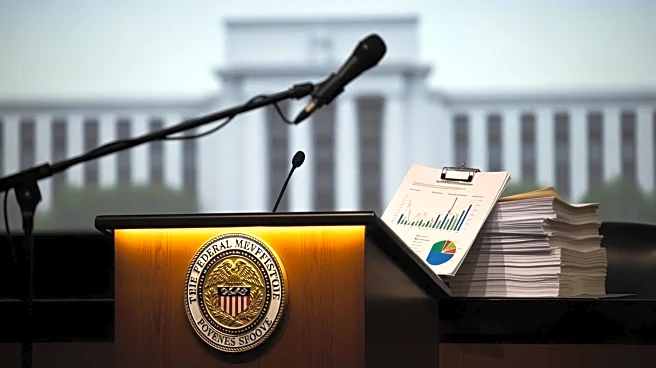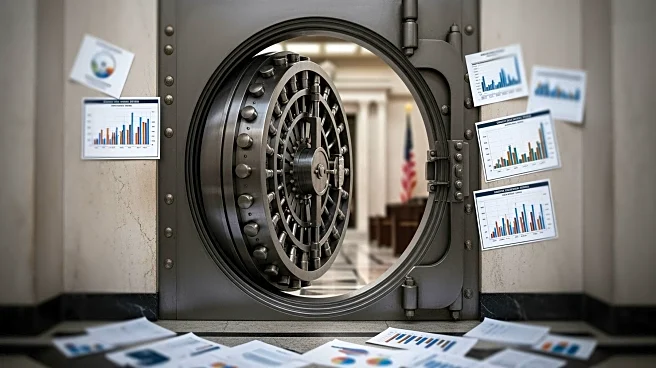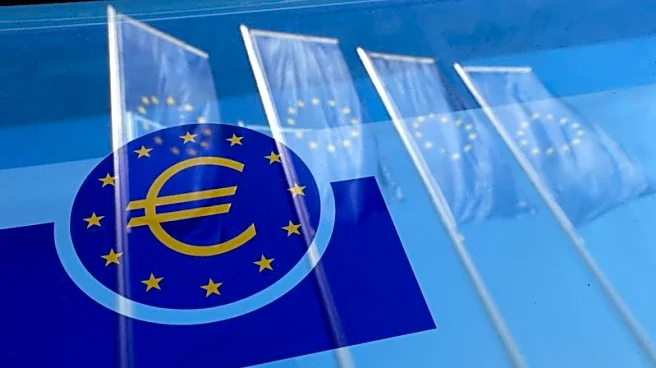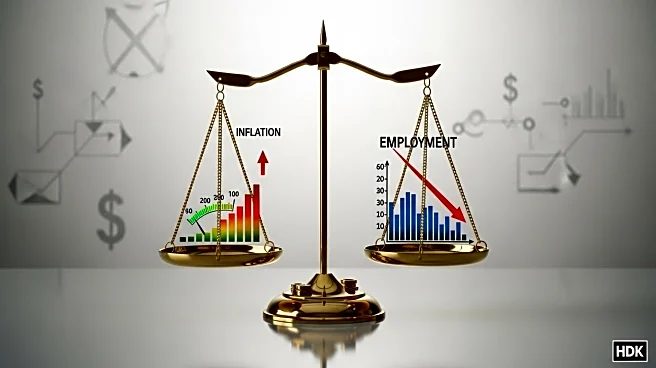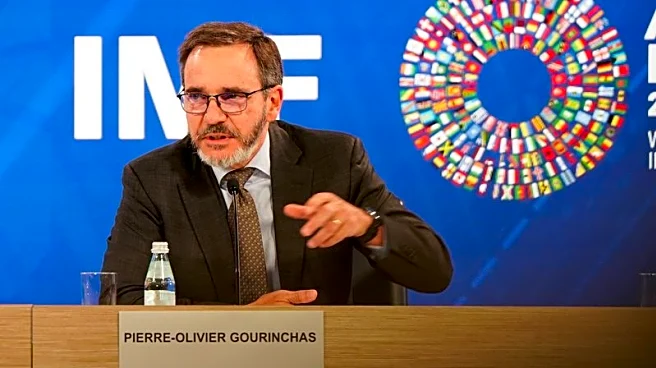What's Happening?
The Federal Reserve's Federal Open Market Committee (FOMC) is expected to cut interest rates by 25 basis points at its upcoming meeting on October 28-29. This anticipated move would lower the overnight
fed funds rate to a range of 3.75% to 4.00%, down from the current range of 4.00% to 4.25%. The expectation of a rate cut is driven by a slowdown in hiring and ongoing trade tensions with China, as indicated by Federal Reserve Chair Jerome Powell and Fed Governor Stephen Miran. The anticipation of rate cuts has already influenced the market, with Treasury yields experiencing a decline, notably the 10-year Treasury yield falling to 4.011%.
Why It's Important?
The potential rate cut by the Federal Reserve is significant as it reflects the central bank's response to economic challenges, including trade tensions and employment trends. Lower interest rates can stimulate economic activity by making borrowing cheaper, potentially benefiting businesses and consumers. However, it also signals concerns about economic growth and stability. Investors and financial markets are closely monitoring these developments, as they can impact investment strategies and economic forecasts. The decision could have wide-reaching implications for the U.S. economy, influencing sectors such as housing, consumer spending, and corporate investment.
What's Next?
The Federal Reserve's decision on interest rates will be closely watched by investors and policymakers. Scheduled speeches by Federal Reserve Governors and the Vice Chair for Supervision may provide further insights into the central bank's monetary policy direction. Additionally, the ongoing U.S. government shutdown has resulted in a blackout of official economic data, complicating the Fed's decision-making process. The delay in key economic reports, such as the consumer price index, adds uncertainty to the economic outlook. Stakeholders will be looking for any signals from the Fed regarding future rate adjustments and their impact on economic recovery.
Beyond the Headlines
The Federal Reserve's actions highlight the delicate balance it must maintain between stimulating economic growth and controlling inflation. The potential rate cut underscores the challenges faced by policymakers in navigating economic uncertainties, including geopolitical tensions and domestic economic indicators. The decision could also influence global financial markets, as changes in U.S. interest rates often have ripple effects internationally. The Fed's approach to monetary policy will be crucial in shaping economic expectations and maintaining investor confidence.


